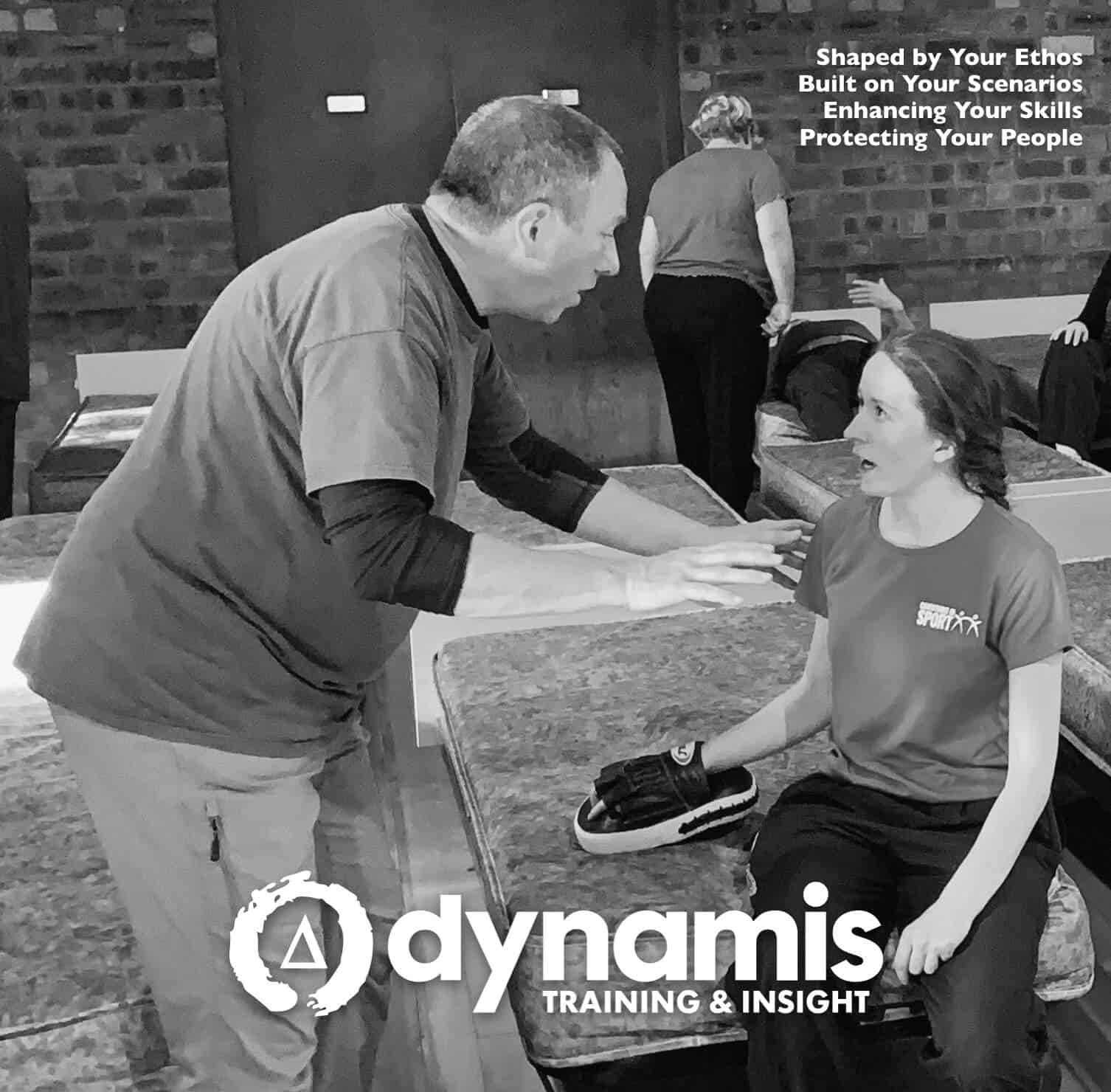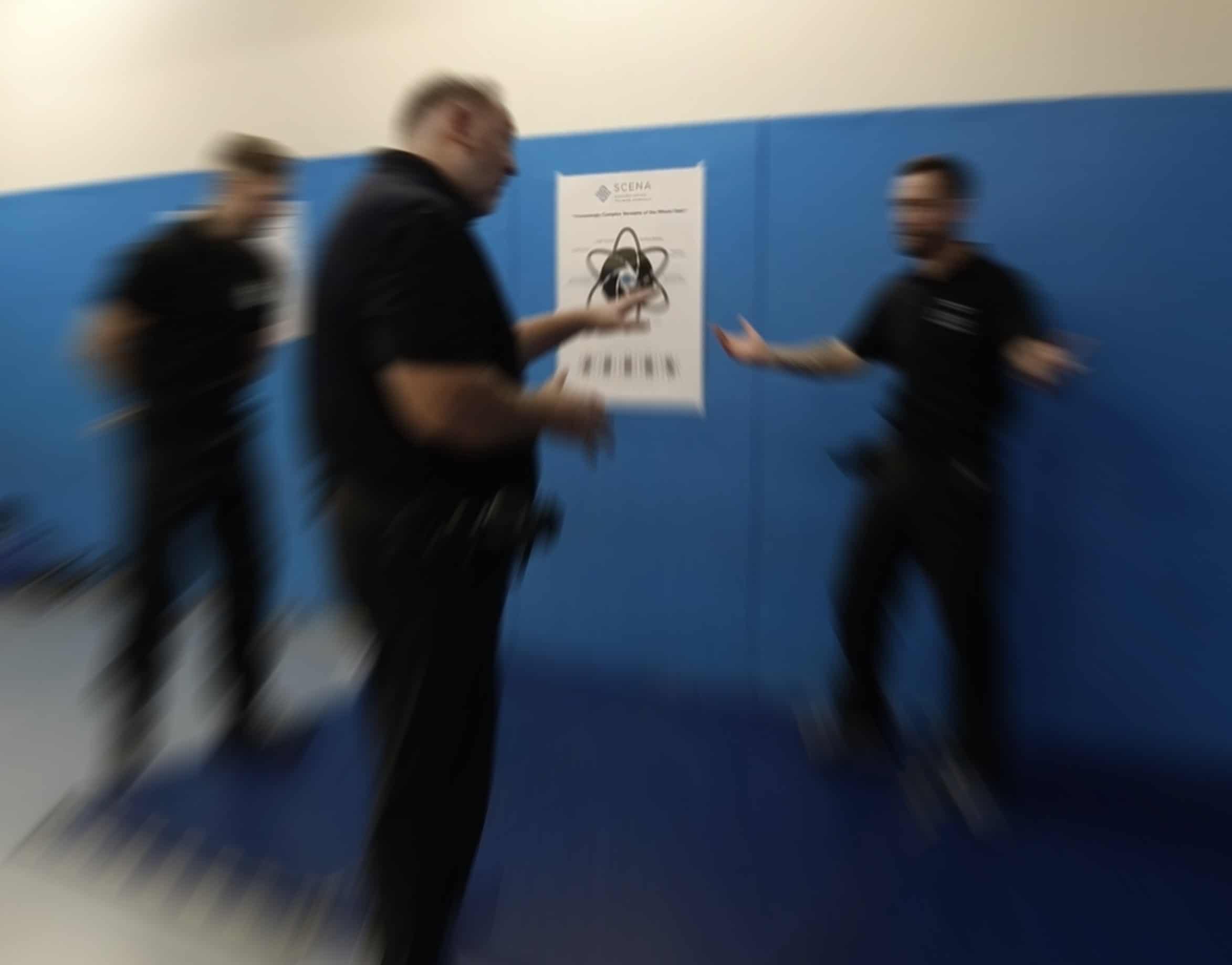Personal Safety for Community Enforcement and Warden Roles
Neighborhood, Environmental, Parking and other Community-based Enforcement Personal Safety Training

Our Customers in this area of community safety and enforcement have included:
- Edinburgh City Council
- Peterborough City Council
- Dundee City Council
- London Borough of Hackney
We have helped Community Safety Wardens, Neighbourhood Teams, Parking Enforcement, Anti-Social Behaviour, City Enforement, Environmental Control Officers and others.
Our clients have felt the benefit of our training across a number of domains.
CONFLICT MANAGEMENT
– Non-escalation in initial contacts with clients and customers
– A values-based de-escalation methodology based on empathy and listening
– Understanding when words alone are failing to maintain safety
– When and How to Take Appropriate Action
For more information visit our dedicated webpage at: www.dynamis.training/conflict-management
RISK ASSESSMENT and SITUATIONAL AWARENESS
– Doorstep or Street-Side Decision Making and the Role of Intuition
– Pre-Incident Indicators and How to Predict Behaviour
– Staff Teamwork, Communication and Alerting systems
– Safe Systems of Work for engaging in home or premises visits
PERSONAL SAFETY and SELF-PROTECTION
– Proxemics: position, distance, body language for enhanced safety
– Movement, Time and Distance for Escape Route selection in properties and on the street
– Instinctive Protection for survival from common assaults
– Legal Rules for the Correct Use of Force for Self-Protection (delivered to at-risk teams only where requested or indicated by the Training Needs Analysis)
For more information about self-protection please visit our dedicated webpage at: www.dynamis.training/breakaway
EACH of these domains of learning can be taught in an in-depth format.
OR any of the domains of learning can be blended together into a concise, succinct format.
and
ALL THREE domains of learning can be taught over a comprehensive multi-day course format, supported by online coursework.
We are totally flexible to what you need and can fit around those areas where your in-house training is already strong (for example, your teams may already be really excellent at customer service communication skills, or risk assessments).

Enforcement Team Leader @ London Borough of Hackney
“Just a quick feedback from our first training session which took place today.
I would say that the training meets exactly our requirements. It clearly emphasis that any physical interaction with others is only to be used if all other strategies failed. The breakaway techniques taught are simple enough to remember and focus on personal safety. As with all self-defence trainings, I initially had concerns that our staff might want to become a bit too hands-on but following the training today I am pleased that we learned a whole range of de-escalation techniques in addition to the breakaway techniques. Gerard was definitely the right man for that and I trust that his colleague who will do the next session will be just as experienced.”
TRAINING DELIVERY
The standout features of our training is that it is Practice-based and Performance-focussed – your teams will be up and moving in the training room, exploring scenarios and contexts which are relevant to their work and our training demands that they produce the words, behaviours and strategies in-vivo, in the classroom, so that they retain them better when they go back to their workplace.
You can see a video example on YouTube of one of these courses we ran for a Supported Accommodation team at The Salvation Army, here: https://youtu.be/_dFn7E07EH8
YOUR TRAINER: Dynamis is an Institute of Conflict Management-accredited Quality Award Centre #2201
Our trainers have a minimum of the following:
- BTEC Level 3 PTTLLS Preparing to Teach for Lifelong Learning education qualification
- BTEC Level 3 Advanced Self-Defence Instructor Qualification
- BTEC Level 3 Conflict Management Qualification
In addition, Gerard O’Dea is qualified:
- European Advisor for Vistelar Conflict Management “Verbal Defense and Influence”
- ICM Physical Skills Tutor Award at Level 4
- Certified Expert Witness (Bond Solon / Cardiff University)
- Functional Edge System European Director
- Author on Lone Working and Positive Handling (Amazon Link)
In brief, our work with Enforcement and Warden Teams:
– recognises their unique ‘rules of engagement’ in terms of enforcement encounters
– focusses on a non-escalation mindset of professional contact and ‘procedural justice’
– demands an awareness of ‘treating people right’ even during enforcement action
Physically, our method of self-protection has its basis in modern, well-evidenced forms of Officer Safety Training. It is not a healthcare-based ‘Breakaway’ platform nor is it one of the common ‘Self-Defence’ systems – both of which can be inappropriate for the demands of officer safety in the context of enforcement officer (and parking, and environmental) work.
Our training methodology is scenario-based and task-focussed, meaning that we begin with the team actually carrying out similar tasks to those they carry out in the community, and then we gradually add violence and aggression risk to the scenarios, while practicing (and not just talking about) the appropriate verbal, behavioural and physical responses.
In event-based training, events are embedded into training to achieve desired training objectives and provide opportunity for the trainee to apply skills in an environment representative of real world operational conditions.
Training Fidelity
Thought-leaders in the field of confrontation training recognise that the best way to design a training programme is to look at the types of scenarios in which our trainees may be faced with a performance challenge, and then place those scenarios at the very center of our thinking.
In this way, we ensure that the programme of training is relevant, effective and contextualised to provide the greatest benefit to the trainees when they need to put the skills they are being trained in, to use.
“training fidelity refers to the extent to which the characteristics of the training environment are similar to the characteristics of the criterion setting” - PERFORMANCE UNDER STRESS (Hancock and Szalma 2008)
Ideally, the more fidelity the scenario exercise has with reality, then the better the result of our training, however it is possible to overwhelm the trainees with too high a level of fidelity and so cautious planning about the thresholds to which the training should cross / not cross are set in advance.
Our use of Impact Reduction Training Armour allows us to drastically improve and increase our level of training fidelity with role-players who can move naturally, broadcast congruous body-language and cues and then who can be impacted and controlled at close to full speed and full force by our trainees. This level of fidelity could not be possible without the use of such robust and specially-designed gear.


Four-Phase Training Model
We understand that there is significant difference in what it takes to perform a task in a benign environment and what adequate performance requires in a hazardous or high-demand environment (such as the use of physical intervention or protection skills during a confrontation).
The difference in the effectiveness of training is how the contextual environment impacts on performance: “consideration of the contextual factors that impinge on task performance is critical to maintaining effective performance in real-world settings” PERFORMANCE UNDER STRESS (Hancock and Szalma 2008)
The distinction between effective training and less-effective training, then, is the extent to which the training deals with and incorpoates these contextual factors which are (quite literally) part of the furniture in real-world scenarios!
We argue that the primary goal of any training programme is skill acquisition and retention, however high-stress environments include specific task conditions and require responses which differ from those found in the sterile classroom environment.
We use a four-phase model to structure our training:
1: Cognitive analysis, breakdown and reverse-engineering of tactical problems
Trainees are taught how to breakdown ‘global stressors’ into specific short-term, intermediate and long-term tactical goals. The trainees’ response to the stressor is re-packaged as being made-up of different components that have been identified and examined in detail.
2: Skills Acquisition, Development and Practice Phase
The second phase requires focus on skills acquisition and rehearsal and it follows naturally from the initial conceptualization phase which came before it. The specific skills that are taught and practiced in the training setting are then gradually rehearsed in more intense settings and are tailored to the specific stressors trainees may have to deal with in their poerational environment
3: Exposure, Testing and Experimentation Phase (in-vivo scenario replication)
The next phase of training and preparation provides opportunities for the clients to apply the variety of skills they have learned to deal with the problem across increasing levels of intensity. This is where the inoculation concept – as used in medical immunization – becomes evident. Techniques such as imagery and behavioral rehearsal, modeling, role playing, and graded in vivo exposure in the form of “personal experiments” are used during this phase to increase the trainees competence.
4: Detailed Debrief and Review of Performance including re-framing of objectives
Using video and in-person debriefs from experienced mentors, the process of refinement and re-adjustment of tactics and techniques is guided towards improvement in performance.
Our training is event-based – the event itself becomes the curriculum.
An event is defined as: “a specific task procedure with corresponding performance conditions. Events may be discrete and singular or they may be multiple events connected into a series representing a longer scenario. Events are defined to represent real world events and contextual demands.”
Enforcement Officer and Environment / Parking / Neighbourhood Warden Personal Safety Training
Course Rationale:
This course is designed to assist officers and wardens to survive a typically unanticipated ‘ambush’ attack during close-quarter interactions with angry, frustrated and violent people in their community. We focus on the most probable common attacks against officers and wardens and incorporate scientific methods to prepare officers to minimise risk of injury in these encounters. The startle-reflex phenomenon and other behavioural responses to violence are core to the teaching method, which is based on an event-focussed, scenario-based model. The result is higher-performing officer or warden whose tactics are resilient and appropriate in the face of sudden violence.
Learning Outcomes:
- Attitudes required for self-protection
- Core Principle: Treating the people we meet with Dignity by Showing them Respect, even when we may disagree with them.
- Maintaining a professional equilibrium and a performance mindset when performing our enforcement role
- Redirecting behaviour with words. Listening skills. Persuasvie Problem solving.
- Positioning, Distance and Body Language which enhances safety.
- Mental Model Training to become quicker at identifying the pre-indicators of assault
- Instinctive Protection and Defensive Behaviours
- Understand the use of Natural Frames and how the body deploys ‘bumpers’ and ‘shields’
- Leverage Instinctive Protection (startle reflex motions) to deflect or mitigate impact assault
- Engagement Development to be able to disrupt an assailant’s effective assault (where necessary)
- Escape route selection, timing, and achieving safety.
- Comms Equipment use and timing of use
- Teamwork for positioning, observation and taking appropriate action


